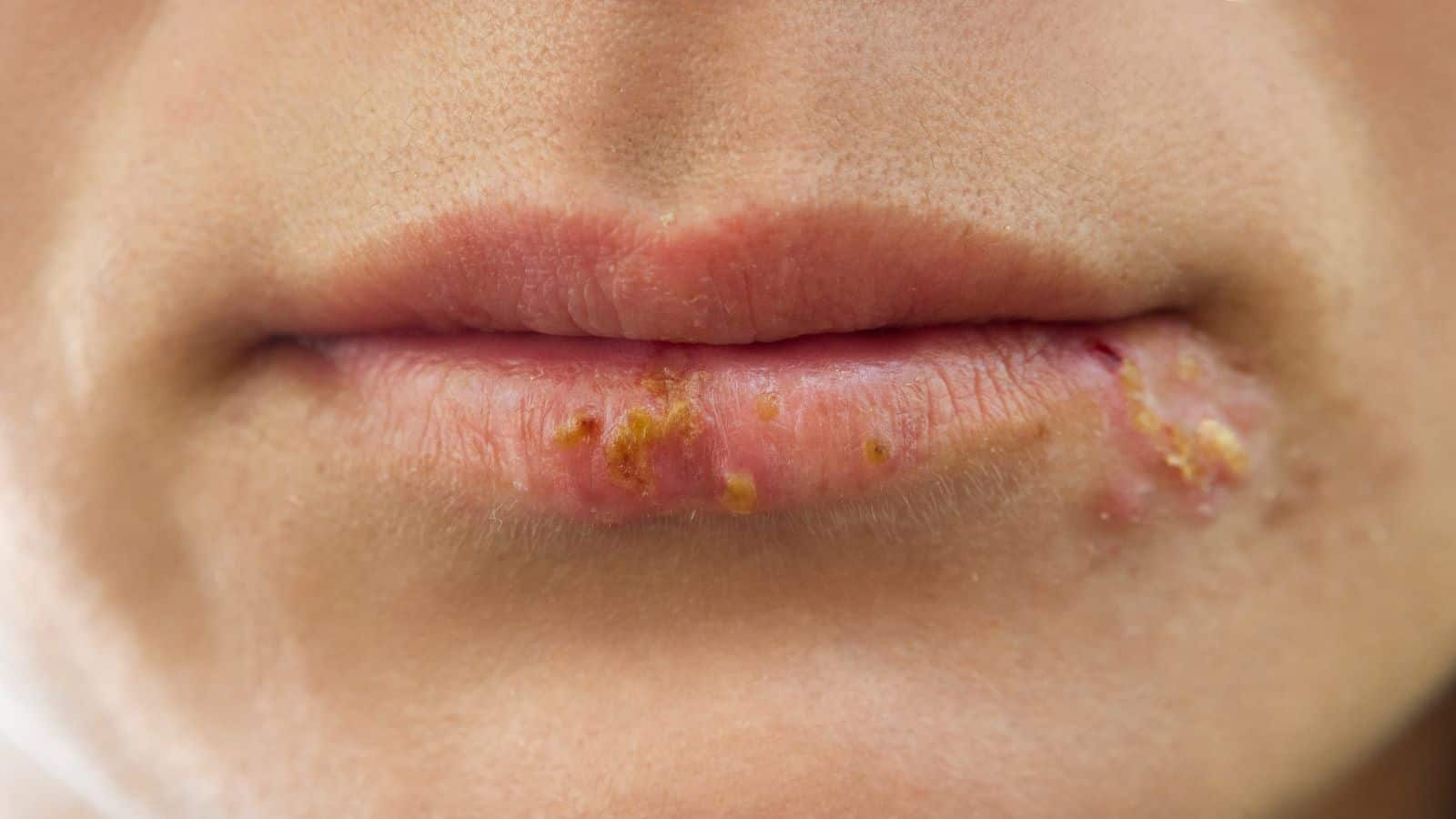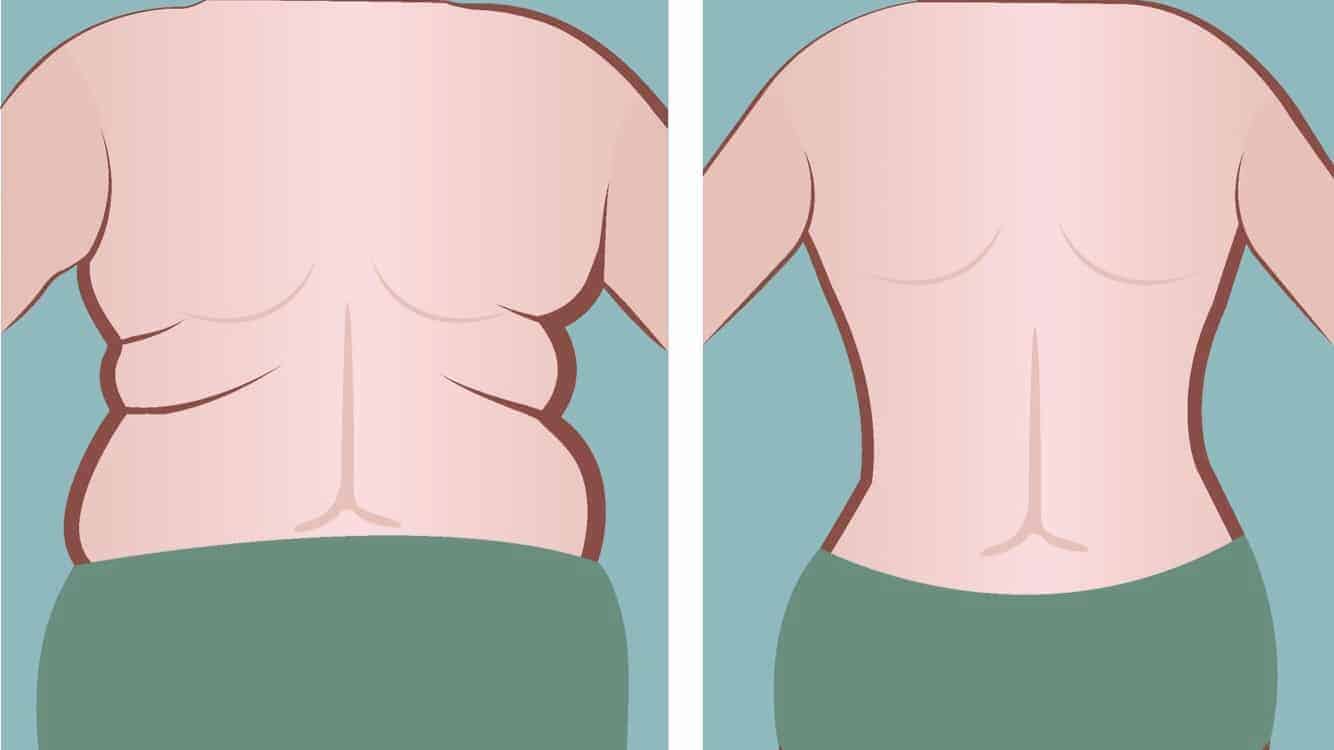If you’ve ever been bothered by a painful and unsightly fever blister, you know that they pop out at the worst times. Maybe it happens prior to school pictures, an important job interview, or before your wedding. They can appear anywhere on your face and can last up to 14 days.
While they will go away, they can still reappear anytime in your life because there’s no cure. However, some natural remedies and medications can ease the symptoms and speed up the healing process. It’s best to treat them in the early stage.
What is a Fever Blister?
Fever blisters are often called cold sores because they can accompany a fever or a bad cold, and they usually appear on the seam of the lip or around your face. Like the common cold, fever blisters are caused by a virus. These sores are caused by the herpes simplex type 1 virus or HSV1.
Herpes Simplex Virus 1 vs. Herpes Simplex Virus 2
 The HSV1 is related to the herpes simplex type 2 virus, or HSV2, which causes the same type of sores on the genitals, an STD called genital herpes.
The HSV1 is related to the herpes simplex type 2 virus, or HSV2, which causes the same type of sores on the genitals, an STD called genital herpes.
Although HSV1 is not considered a sexually transmitted disease like HSV2, it can also cause fever blisters in the genital area. Likewise, HSV2 can produce sores on your lips and your face.
Both herpes simplex viruses are highly contagious, whether the sores have appeared or not. You can get fever blisters by coming in contact with someone who has the virus. HSV1 is usually passed on by kissing, eating from the same plate, or sharing cosmetics.
Are Cold Sores and Canker Sores the Same?
Cold sores and canker sores are both ugly and painful, but they aren’t the same condition. Canker sores are flat, pale lesions surrounded by inflammation that usually occurs in the mouth, on your tongue, or the insides of your cheeks. These are often caused by injury or by eating spicy food that burns the inside of your mouth.
The word is still out on whether canker sores are viral and contagious like cold sores. Research shows that they also may be related to the immune system, and they can reoccur anytime. Although canker sores usually heal quicker than cold sores do, there remains no cure for either condition.
Signs and Symptoms of a Cold Sore
When you’ve had cold sore outbreaks in the past, you already know the signs of recurrence. Here are the common signs and symptoms:
- Tingling or burning sensations in the seam of your lips or on your face. This usually happens a few days before the blister appears. When you notice this sign, start treatment as soon as possible.
- A small inflamed blister forms that are red and full of fluid. Sometimes, the virus will cause a cluster of painful and tender blisters. You can also have more than one sore develop.
- These painful sores will usually be present for up to 14 days. Until they burst and scab over, they will be contagious. If you have contact with the HSV1 virus, it may take up to 20 days for the first cold sore to appear.
Other Symptoms to Notice
In addition to the outbreak of sores on your mouth or face, you may notice some of these symptoms when you’ve contracted HSV1:
- Low-grade fever
- Swollen lymph nodes
- Aching muscles
- Lack of energy
Although rare, some people can develop symptoms in their eyes during an outbreak of herpes simplex 1, especially children. Seek medical attention immediately if you notice any eye problems. If the infection isn’t treated immediately, it could lead to permanent loss of your vision.
Five Stages of a Cold Sore
It often seems like a cold sore can develop overnight and plague you for days. Most cold sores go through five stages before they disappear. Again, the best time to treat them is to notice the initial signs in the first stage.
First stage: You will usually feel tingling, irritation, and itching around your mouth or other areas of your face about one day before you see blisters appear.
Second stage: Small inflamed blisters filled with fluid erupt on the seam of your lips or your face. They burn and itch profusely.
Third stage: The blister or cluster of blisters burst and ooze fluid, then turn into sores that are painful and tender to the touch.
Fourth stage: As the sores dry over a few days, they will seal over with a cracking scab that continues to itch, burn, and occasionally bleed.
Fifth stage: The crusty scab finally peels away, and the cold sore is healed. Unless you’ve picked at the scab and caused further inflammation, cold sores rarely leave scars.
Uncommon Cold Sore Complications
Although complications from cold sores rarely happen, they can strike children or people with compromised immune systems from the disease. If you or a loved one has a cold sore outbreak and notice any of these symptoms, seek medical attention right away:
- Running a high fever or one that persists
- Breathing or swallowing difficulties
- Eyes that are irritated and red, with or without discharge
Risk Factors for Developing Cold Sores
Men and women of any age can catch the HSV1 at any time and develop cold sores. However, outbreaks are more common during cold weather, when the cold and flu virus is more prevalent, and people’s skin is prone to dryness and irritation. These risk factors may increase your chances of contracting the virus:
- The current bout of cold, flu, fever, or infection
- Overexposure to UV rays of the sun
- Chronic stress
- A weakened immune system caused by diseases such as HIV/AIDS
- Severe burns
- Eczema, especially on the face
- Chemotherapy
- Menstruation
- Recent dental procedures
Natural Remedies for Fever Blisters
Even though you can’t cure cold sores, you can ease the burning, itching, and pain with remedies you have at home. The sooner you treat your sores, the faster you can see them disappear.
• Cold Therapy
As soon as you notice the signs of a cold sore, chill it out by applying a small ice pack to the affected area. You can also soak a clean washcloth with cold water and apply it to the sore from easing the irritation.
• Herbal Lip Balm
Try a soothing lip balm on your cold sore that has tea tree oil or pure lemon extract. Tea tree oil is an excellent anti-inflammatory that can reduce the swelling. Lemon oil is a natural astringent that can speed up the drying process.
• Aloe Vera
The cooling gel from the aloe vera plant has been used for thousands of years to heal burns, calm irritation, and provide deep moisturizer for the skin. Use a cotton swab to apply pure aloe vera gel on your cold sore 2-3 times a day until the sore goes away.
• Natural Oils
Instead of using harmful chemicals like petroleum jelly, why not treat your cold sore with natural oils. Try coconut oil, shea butter, jojoba, or even extra-virgin olive oil on a cotton swab. These oils have antioxidants and other compounds that soothe and accelerate the healing process.
• Witch Hazel
Many people swear by using a dab of witch hazel on their fever blisters because it is an astringent that can dry them out quicker. Research suggests that this natural substance has anti-viral properties that may protect against contracting HSV1 and other viruses, but it’s debatable. Also, witch hazel can cause the sore to sting a little on contact.
• Supplements
Lysine is a natural amino acid with anti-viral properties that may quell the HSV1 that causes cold sores. Some herbal practitioners also recommend doses of Vitamin C for its powerful flavonoids. You can also apply Vitamin E topically to the sore to promote healing.
Minimize Your Risks
When it comes to fever blisters, remember that prevention is often easier than treating them. If you’ve had these sores in the past, you risk an outbreak at any time. Here are some helpful reminders to minimize your chances.
- If you or your partner have an active cold sore, avoid kissing until the sore is gone.
- Never share personal items such as razors, toothbrushes, other dental care items, towels, or sports equipment.
- Avoid sharing makeup, brushes, or applicators.
- Avoiding sharing drinks, food, straws, or eating utensils. You can get the HSV1 virus through contact with saliva even if no sores are visible.
- Be sun-smart and avoid overexposure to the sun. Use a sun-blocking lip balm with zinc oxide for optimal protection against a cold sore recurrence.
- Starve the HSV1 virus of arginine, which can make viruses thrive. Avoid high-arginine foods like chocolate, nuts, seeds, and poultry until your fever blister heals.
- Reduce Stress: Did you know that stress is linked to your survival instinct? Chronic stress negatively affects your entire body, especially your immune system. Find easy ways to reduce stress in your life to make you less vulnerable to illnesses and viral conditions like fever blisters.
 Final Thoughts on Managing Fever Blisters
Final Thoughts on Managing Fever Blisters
Cold sores are a nuisance that can erupt anytime in your life. While the condition isn’t curable, you can minimize your risks and try home remedies to soothe the symptoms until they heal. If you have a sore that hasn’t healed in two weeks or affects your eyes, seek medical attention promptly.

















